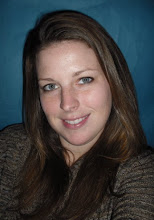Several advances have been made on the actor side of my thesis project. First, I discovered a way to use the stage mouse watcher in conjunction with the polygon mapper actor to map individual vertices. This differs from previous iterations because I can map both the x and y on the stage itself instead of using a control panel 2D slider box for each point. The issues with the previous control panel were that each vertex was located in a different box, as seen below.

With the new iteration, the need for a control panel is eliminated and all mapping is done on the stage itself. This cuts down the time it would take to map an object. It also allows for a more precise mapping since there is no disconnect between the object and the vertex points. The downfall of this process is no outline map is generated for the object. It would be beneficial to have a final picture of the boundaries of the installation for later use.
In addition to the mapping being done on screen, there are several other functions the actor now has. First, the edit mode can be toggled on and off by right clicking while on the stage. There is no need to physically change an input in the patch. This creates a more efficient work process. However, when working on multiple maps in one patch right clicking to turn the edit mode off will turn the edit mode on or off for other maps in the same patch depending on its current status. The only way to avoid this is to disconnect the line between the trigger and the toggle on the maps when you are not using them. To easily see the edit mode status a series of green and red dots appear when editing and disappear when not editing.
Another issue that was first encountered when using the stage mouse watcher was the vertex being edited would automatically jump to the location of the mouse. This is not a huge issue when first editing a map. However, it creates a very time-consuming issue when fine tuning a map. The vertex would jump to the arbitrary point of the mouse thus limiting the ability to slightly adjust a vertex quickly. This issue was resolved by creating a "sticking" effect with the mouse and edit vertex. Once a vertex was being edited the "dot" will stay in place until the mouse moves within a 5 x 5 pixel radius of the vertex. At that point, the "dot" will attach itself to the mouse and follow it to the desired location. This function prevents the vertices from jumping to random and unwanted coordinates. Further testing on a large scale revealed that using a 5 x 5 pixel ration is too large and should be scaled down for more exact mapping.
Moving from one vertex to another when editing has been simplified. The left and right arrow keys move back and forth from one edit dot to another in a complete circle. This also streamlines the mapping process. A video of the edit rotation can be seen below. After speaking with a professional projection designer Matthew Haber about this aspect, he brought up a potential problem with using the left and right arrow keys to rotate through the edit dots. In certain situations, designers will use the left and right arrow keys as triggers for the show itself to move through cues. The problem is minimal since the edit mode controls the ability to move left and right. Only when the edit mode is on do the arrow keys function in that way. The triggers for cues need to be put in place once the mapping has been completed to avoid an overlap in use. More practical testing will have to be done to ensure the potential problem is minimized. One easy way to avoid the issue is to change the left and right arrows to letters on a keyboard, or let them be chosen by the user.
It is imperative that a designer not be limited to the number of vertices for any given map. This is the case in most video projection tools that are out there, map map map for Modul8, VPT, etc. They often give you only 4 - 16. With the polygon mapper tool there is an unlimited amount of vertices that can be added at any point in the mapping. Currently, there is an initial value of 0,0 all vertices in the top left corner of the stage. More testing is needed to determine if that is truly the best place for an initial value.
This video shows:
~ editing with the stage mouse watcher (the mouse can't be seen)
~ rotating through the edit dots
~ adding vertices
~ turning the edit mode on and off (edit dots disappear)

No comments:
Post a Comment